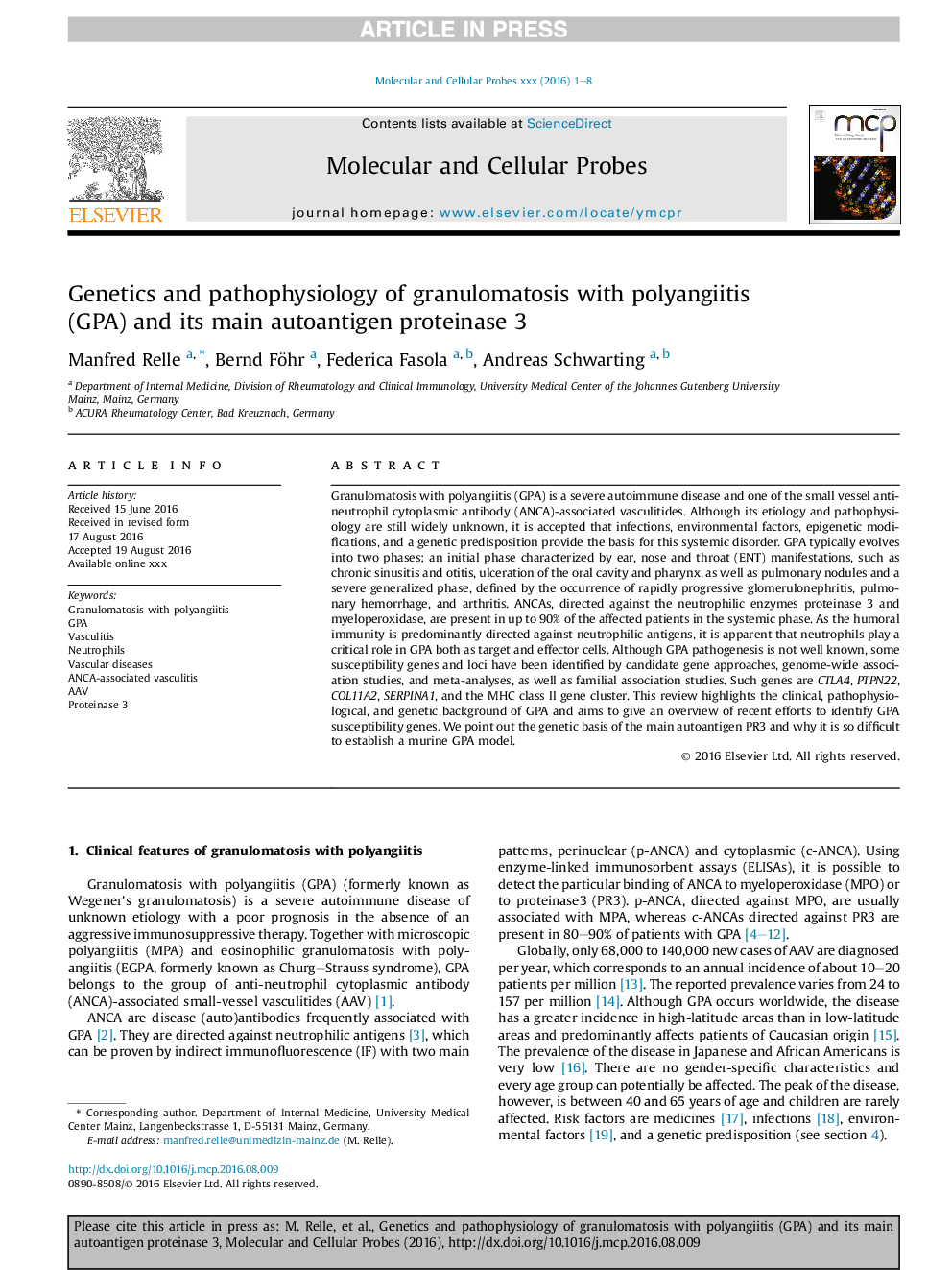| Article ID | Journal | Published Year | Pages | File Type |
|---|---|---|---|---|
| 8478785 | Molecular and Cellular Probes | 2016 | 8 Pages |
Abstract
Granulomatosis with polyangiitis (GPA) is a severe autoimmune disease and one of the small vessel anti-neutrophil cytoplasmic antibody (ANCA)-associated vasculitides. Although its etiology and pathophysiology are still widely unknown, it is accepted that infections, environmental factors, epigenetic modifications, and a genetic predisposition provide the basis for this systemic disorder. GPA typically evolves into two phases: an initial phase characterized by ear, nose and throat (ENT) manifestations, such as chronic sinusitis and otitis, ulceration of the oral cavity and pharynx, as well as pulmonary nodules and a severe generalized phase, defined by the occurrence of rapidly progressive glomerulonephritis, pulmonary hemorrhage, and arthritis. ANCAs, directed against the neutrophilic enzymes proteinase 3 and myeloperoxidase, are present in up to 90% of the affected patients in the systemic phase. As the humoral immunity is predominantly directed against neutrophilic antigens, it is apparent that neutrophils play a critical role in GPA both as target and effector cells. Although GPA pathogenesis is not well known, some susceptibility genes and loci have been identified by candidate gene approaches, genome-wide association studies, and meta-analyses, as well as familial association studies. Such genes are CTLA4, PTPN22, COL11A2, SERPINA1, and the MHC class II gene cluster. This review highlights the clinical, pathophysiological, and genetic background of GPA and aims to give an overview of recent efforts to identify GPA susceptibility genes. We point out the genetic basis of the main autoantigen PR3 and why it is so difficult to establish a murine GPA model.
Keywords
Related Topics
Life Sciences
Biochemistry, Genetics and Molecular Biology
Cell Biology
Authors
Manfred Relle, Bernd Föhr, Federica Fasola, Andreas Schwarting,
